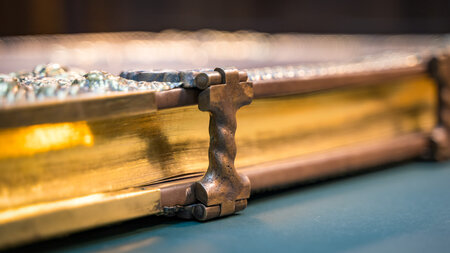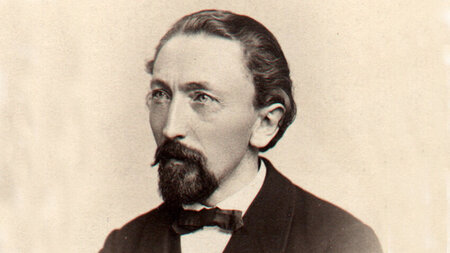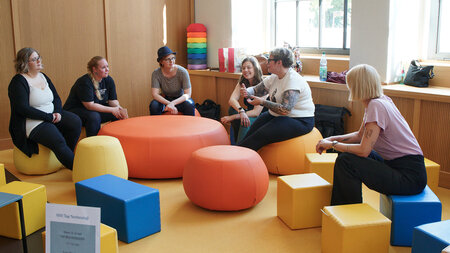Eintrag in der Universitätsbibliographie der TU Chemnitz
Zichner, Ralf
Chandra, Madhukar (Prof. Dr. rer. nat.) ; Baumann, Reinhard R. (Prof. Dr. rer. nat.) (Gutachter)
Hochfrequenz‐Kommunikation gedruckter Antennen in herausfordernden dielektrischen oder metallischen Umgebungen
High-frequency communication of printed antennas in challenging dielectric or metallic environments
Kurzfassung in deutsch
Die vorliegende Arbeit beschäftigt sich mit der Entwicklung von anwendungsspezifisch angepassten und drucktechnisch herstellbaren Antennen für Radio‐Frequency‐Identification (RFID) Anwendungen im Ultra‐High‐Frequency (UHF) und Super‐High‐Frequency (SHF) Frequenzbereich. Dabei werden alle Entwicklungsschritte und deren Abhängigkeiten vom Antennenentwurf über die Simulation, die Herstellung im Druckverfahren und die Antennenvermessung betrachtet. Die Alleinstellungsmerkmale der vorliegenden Arbeit liegen in der Erforschung von Antennen, welche eine hohe Funktionalität in herausfordernden dielektrischen oder metallischen Umgebungen (Glas, Holz, Papier, Aluminium, …) aufweisen sowie im Druckverfahren hergestellt werden. Mit Hilfe von FEM‐ und MoM‐Berechnungen werden neu entwickelte Antennenkonzepte wie 898 MHz‐Dipolantennen, 868 MHz‐Längsstrahler‐ Antennenkonfigurationen, 868 MHz‐(Reflektor)‐Antennenkonfigurationen und 5.8 GHz‐3D‐Dipol‐ Antennendesigns zur Erhöhung der Kommunikationsfähigkeit untersucht und beschrieben. Dabei werden hinsichtlich der 868 MHz‐Längsstrahler‐Antennenkonfiguration, zur Funktion in direkter metallischer Umgebung, Performance mindernde Depolarisationseffekte nachgewiesen. Eine Minimierung dieser Effekte wird mit der gezielten Krümmung elektromagnetischer Wellenfronten zwischen abstrahlendem Antennenelement und Reflektor erreicht. Der Nachweis wird anhand einer selbst entwickelten 868 MHz‐(Reflektor)‐Antennenkonfiguration geführt. Um die Leistungsfähigkeit gedruckter Antennen weiter zu steigern, werden Antennen mit gerichteter Abstrahlcharakteristik mit einer Resonanzfrequenz von 5.8 GHz und einer Frequenzbandbreite von 150 MHz entworfen. Als ein Ergebnis werden Antennen mit dreidimensionaler Geometrie vorgestellt. Die Besonderheit hierbei liegt in der planaren Herstellung der Antenne im Druckverfahren und der anschließenden dreidimensionalen Aufrichtung. Die entwickelten Antennen sind direkt in kommerzielle und industrielle Anwendung überführbar.
Kurzfassung in englisch
This doctoral thesis focuses on research and development in the field of novel, optimized and printed antenna structures for UHF and SHF-RFID applications in challenging dielectric and metallic environments. These antenna structures have a high level of functionality, the manufacturing costs are low and they can easily be integrated.At the beginning of this work, based on wave equations it had been deduced that the propagation of electromagnetic waves in different media is dependent on the two material parameters permeability and permittivity. Based on this knowledge and further application- and manufacturing-specific parameters (resonance frequency, radiation characteristics, impedance, properties of the object which is to be identified (form, geometry, permeability and permittivity) and manufacturing-specific properties (substrate, material and printed layer thereof)), dipole antenna designs for different dielectric environments (air, paper, glass or wood) were designed, investigated with the help of a simulation tool, manufactured employing screen and gravure printing technologies and characterized in an anechoic chamber.
The employed printing technologies are very dynamic processes which depend on various process parameters. In order to improve the functionality of printed antenna structures, several dependencies between the printing processes and the achieved antenna properties have been investigated. Summed up, it can be stated that next to all manufacturing-specific dependencies, the antenna design itself is the most significant factor influencing the achievable antenna properties. Next to carrying out research on dielectric antennas in the near field, finding novel antenna concepts for the realization of highly functional UHF-RFID-transponder-antennas for the application on metallic objects was also part of this investigation. Important to account for is that the metallic objects influence the propagation of electromagnetic waves. In order to efficiently use this physical property of the reflection of electromagnetic waves, novel UHF-reflector-antenna configurations have been designed. Afterwards, its antenna-polarizations behavior was investigated in several simulations before the antenna was manufactured employing screen printing technology and characterized in an anechoic chamber. The developed antenna-configuration showed impressive RFID-reading distances up to 8.1 m (with a RFID-reader transmitting power of 1 W ERP) and compared to the state-of-the-art technology (reading distance approx. 5 m). Therefore this technology enhances the reading performance (distance) by approximately 60 %.
In order to improve the communication quality of future RFID-systems, also novel, multi-directional 3D-RFID transponder antenna structures with a resonance frequency of 5.8 GHz were designed. Because of the increased resonance frequency compared to already existing UHF-RFID systems, the usage of a broader-band RFID-frequency range is possible (5.725 GHz – 5.875 GHz (150 MHz) instead of just several kHz). This allows identifying significantly more objects (> 100) in parallel. The three-dimensional layout of two antenna parts vertical to each other allows a directional (not omni-directional) radiation characteristic outside the enclosed volume of space. Because of this, the influence of dielectric materials (for instance content of product packages) on the functionality of the antenna could be significantly reduced. Also, it was shown that the designed 3D-antenna structure could easily be integrated directly on the interior of for instance product packages employing screen printing technology. After folding/erecting the product package, the antenna receives its three dimensional shape and its verified improved performance.
| Universität: | Technische Universität Chemnitz | |
| Institut: | Professur Hochfrequenztechnik und Allgemeine Elektrotechnik | |
| Fakultät: | Fakultät für Elektrotechnik und Informationstechnik | |
| Dokumentart: | Dissertation | |
| Betreuer: | Chandra, Madhukar (Prof. Dr. rer. nat.) ; Baumann, Reinhard R. (Prof. Dr. rer. nat.) | |
| ISBN/ISSN: | 978-3-941003-91-0 | |
| URL/URN: | http://nbn-resolving.de/urn:nbn:de:bsz:ch1-qucosa-119892 | |
| Quelle: | Chemnitz : Universitätsverlag der Technischen Universität Chemnitz, 2013. - 179 S. | |
| Freie Schlagwörter (Deutsch): | gedruckte Antennen , dielektrische Umgebung , Antennendesign , Antennenvermessung , Hochfrequenz‐Kommunikation , metallische Umgebung , Simulation elektr. und magn. Felder , Antennen‐Abstrahlcharakteristik , Antennen‐Effizienz | |
| Freie Schlagwörter (Englisch): | screen printing | |
| DDC-Sachgruppe: | Technik, Medizin, angewandte Wissenschaften, Andere Fachrichtungen der Ingenieurwissenschaften | |
| Tag der mündlichen Prüfung | 29.05.2013 |




